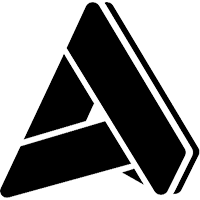Featured in this post
Finding the Best Route Planning Software for Your Growing Fleet
Finding the Best Route Planning Software for Your Growing Fleet
Dec 1, 2021
 Aptean Staff Writer
Aptean Staff Writer 
You’ve been a fleet manager of a successful transportation company for years. Maybe you need routing software for the first time, or you’re considering a switch in systems or provider. You know robust routing software will help you compete but reviewing the options has become overwhelming. We get it—there are numerous choices out there with every function imaginable. Finding the right solution for your fleet is difficult, and you must find the right balance between simplicity and functionality.
Route planning is complex, as you know. There are dozens of variables to consider on any given day, like truck dimensions and capacity; preferred delivery time windows; location-specific restrictions; driver schedules; driver preferences; and even driver skills. You need route planning software that you can configure to encompass any set of factors, but it also needs to be user-friendly.
For example, let’s say you need to create a route that delivers your products to various establishments in a mall on the same truck and in a certain delivery sequence. Basic routing tools cannot handle this type of advanced algorithm. If you’re using basic routing software, you could have more trucks and drivers than you need delivering to that mall.
If you had routing software that can create operation-specific rules, you can handle those requirements. And you could do it while reducing truck miles and improving the customer experience.
There is one simple way to analyze your options. Think about more HOW the routing software completes its functions, rather than what functions it can complete. If it takes a piece of software six steps to complete a task while another can do the same function in two, that makes a big difference to your users.
In this post, we’ll give you the characteristics that you need to think about for your routing software purchase, and help you uncover the best route planning software for your transport operations.
1. Size of Enterprise
If your fleet is smaller than 10 trucks and you have only one central distribution center, any basic routing package might work to get you started. However, if you’ve got two or more distribution centers, you’ll need to create route plans that allocate customer orders to the optimal warehouse and get products delivered faster.
Using advanced routing software that was built for routing from multiple locations, your team can plan centrally or even by region. The result? Efficient, achievable routes that meet the constraints of strict time windows and on-time, in full (OTIF) delivery scheduling.
It’s also important to consider where your organization is going. For example, if you’re planning to expand or diversify, then think through what functionality you’ll need in a year’s time. This will ensure you choose a solution that can grow with you so you don’t have to repeat the entire process.
2. In-House or Remote Computer Capabilities
Advanced route optimization software has both SaaS and on-premise models. For on-premise, you pay a one-time, up-front investment for the software and then pay annual fees for support.
However, if your dispatch team can work from anywhere, you may benefit from a cloud-based route planning solution, that provides more scalability and agility. Most routing software solutions offer Software-as-a-Service (SaaS) products that come with a monthly or annual subscription and typically have a lower total cost of ownership.
Again, keeping an eye on the future is important here. As digital transformation efforts take hold throughout the industry, it's imperative that you choose a solution that can future-proof your business.
3. Creating Precise Route Plans
Almost all routing software will factor in basic data like travel time, stop time and turn restrictions. Some might consider factors like a customers desired time window, truck capacities and a driver’s available shift time. When software doesn’t account for all factors, you can’t consistently create accurate plans that hit promised time windows.
Aptean’s advanced fleet routing software has algorithms that focus on plan accuracy, making it possible to hit tight delivery time windows while still increasing route efficiency. Variable factors such as historic traffic patterns and average unload time for specific customers are included in planning to give you the necessary precision, every time.
4. End Users
What kind of software you buy depends a great deal on who will be using it.
Advanced route optimization software is designed for solving even the most intricate real-world distribution challenges. This means that it does often require more training than basic systems, as it’s designed for people that understand the complexities of logistics. But investing the time to train your planners will ensure you reap the maximum benefit from your chosen solution.
If both your dispatchers and office staff will also use the software, make sure the user interface can be configured to provide each type of user the data they need. It needs to be user-friendly so that your office team can get up and running quickly and complete their daily tasks easily.
5. Customizable Layouts
Most basic routing software packages have an out-of-the-box configuration that is very workable. It’s fast and user-friendly, but the user interface can’t be altered. For a small enterprise, this should work fine.
Nonetheless, most bigger transport operations need specific configurations to support existing business processes. Aptean’s routing packages are configurable so your users can adapt the interface with custom layouts and field names to suit their current working environment.
6. Considers Driver-Specific Data
Your dispatcher knows all the driver’s preferences and availability and should be able to alter the day’s plan accordingly. Look for software that will allow you to add driver-specific data to ensure the feasibility and accuracy of your routing plan.
For instance, maybe you have a driver that can only drive certain trucks, or you have a driver that is getting close to Hours of Service (HoS) overages. With the best route planning software, dispatch can alter plans so that the scheduled drivers can execute the assigned route.
This resource-level route planning capability is available in Aptean’s routing solution. Our system can consider any factors your drivers need and create a route plan based on real-world options for driver assignments.
7. Real-Time Information on the Progress of Your Drivers
If you have a small operation and your customers are flexible about arrival times, you don’t need this feature. But with higher customer expectations, you need complete visibility into what is happening along your routes.
Your best bet? Advanced route planning software that easily integrates with the telematics in the cab. If there’s an issue, you’ll know in minutes, and so will your customer—through automatic notifications or a customer self-service portal.
Later, you can use this data to compile reports on important KPIs, like planned versus actual performance on delivery route progress. You can analyze any factors that could impact on-time performance. The software flags variances so that your routing or customer service teams can proactively manage a customer’s expectations. Daily performance data also gets uploaded into the routing software, making future plans more precise on a continuous improvement loop.
8. Dispatch Smoothing
Only Aptean’s route planning software has this feature, which is designed to prevent bottlenecks in warehouse dispatch. Most transportation plans cannot account for warehouse resources and schedules—but Aptean’s can. The dispatch smoothing feature enables your business to both balance logistics and warehousing operations.
This feature works by calculating the optimal number of loads for dispatch so that the warehouse can meet demand. This means that there will only be a set number of departures within a given period so that available warehouse resources are optimized, and staff are not overburdened.
9. Strategic What-If Scenarios
If you aren’t looking to expand, you don’t need this feature. Otherwise, logistics companies looking for new ways to create efficiencies can benefit from a business modeling feature.
Aptean’s advanced routing software allows you to analyze any number of what-if scenarios, letting you explore the cost and service implications of specific strategies using your actual data. These strategic exercises may include questions like:
What if we added a distribution center?
What if we changed the type and size of delivery trucks used?
What if we expanded our delivery coverage to serve a new region?
These scenarios allow you to become more agile and find strategies that could deliver six- and seven-figure cost savings.
Making the Grade
As your transport business grows, you need route optimization software to reduce the time and costs associated with planning and executing daily routes and schedules. But you also need the right software for your specific requirements, now and in the future.
Don’t take the vendor’s word for it—put them through their paces.
Aptean’s logistics experts are available to prepare a demonstration using your data. We'll load a sample of your data into the system and show you how it might work with your company. Want to see our software in action? Request a demo today.
Alternatively, if you'd like a little more information before chatting with one of our experts, check out our list of fleet route planning software FAQs or see how much you could save using our fleet savings calculator.
Start transforming your route planning today
If you’re ready to take your distribution business to the next level, we’d love to help.



